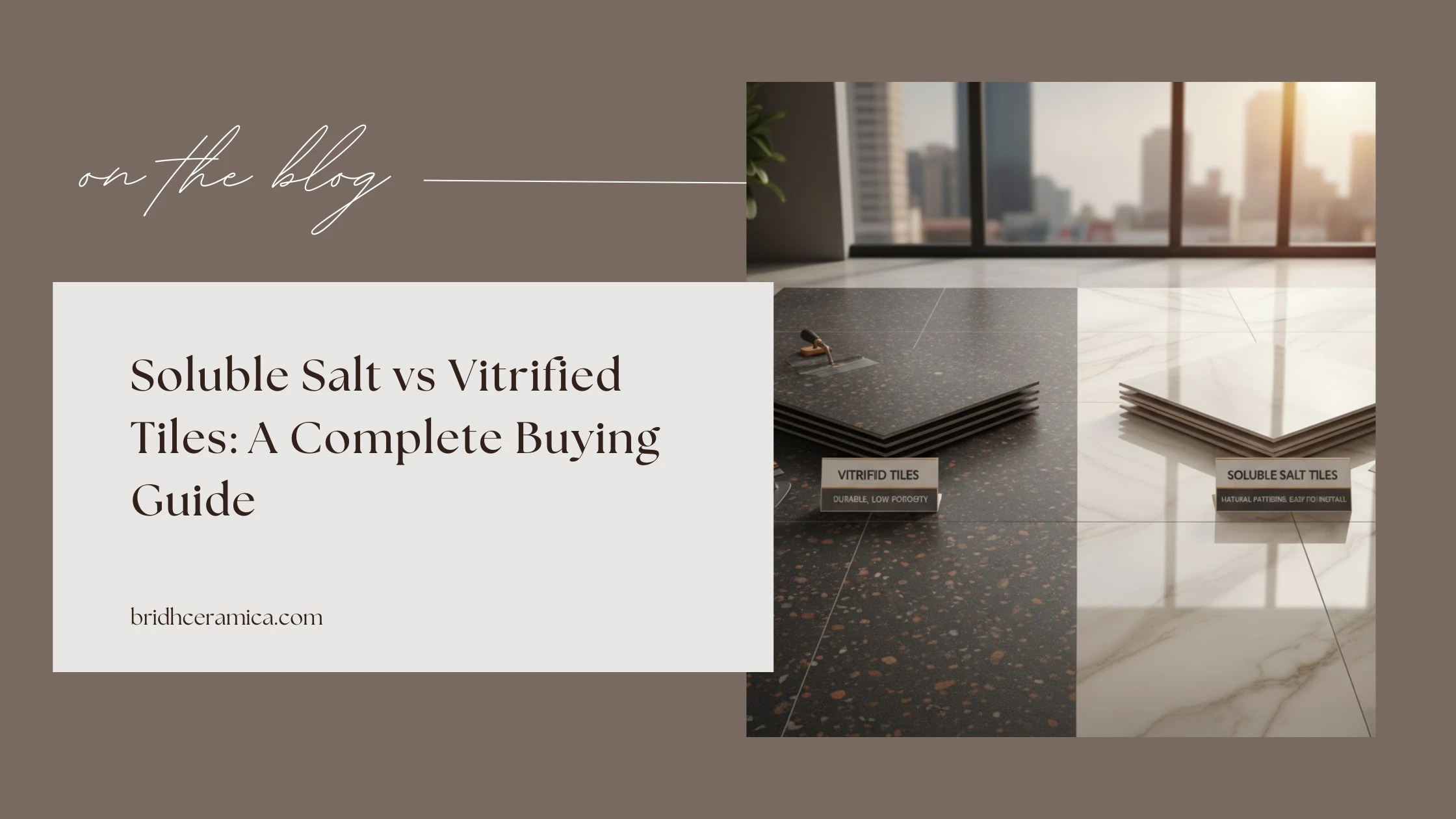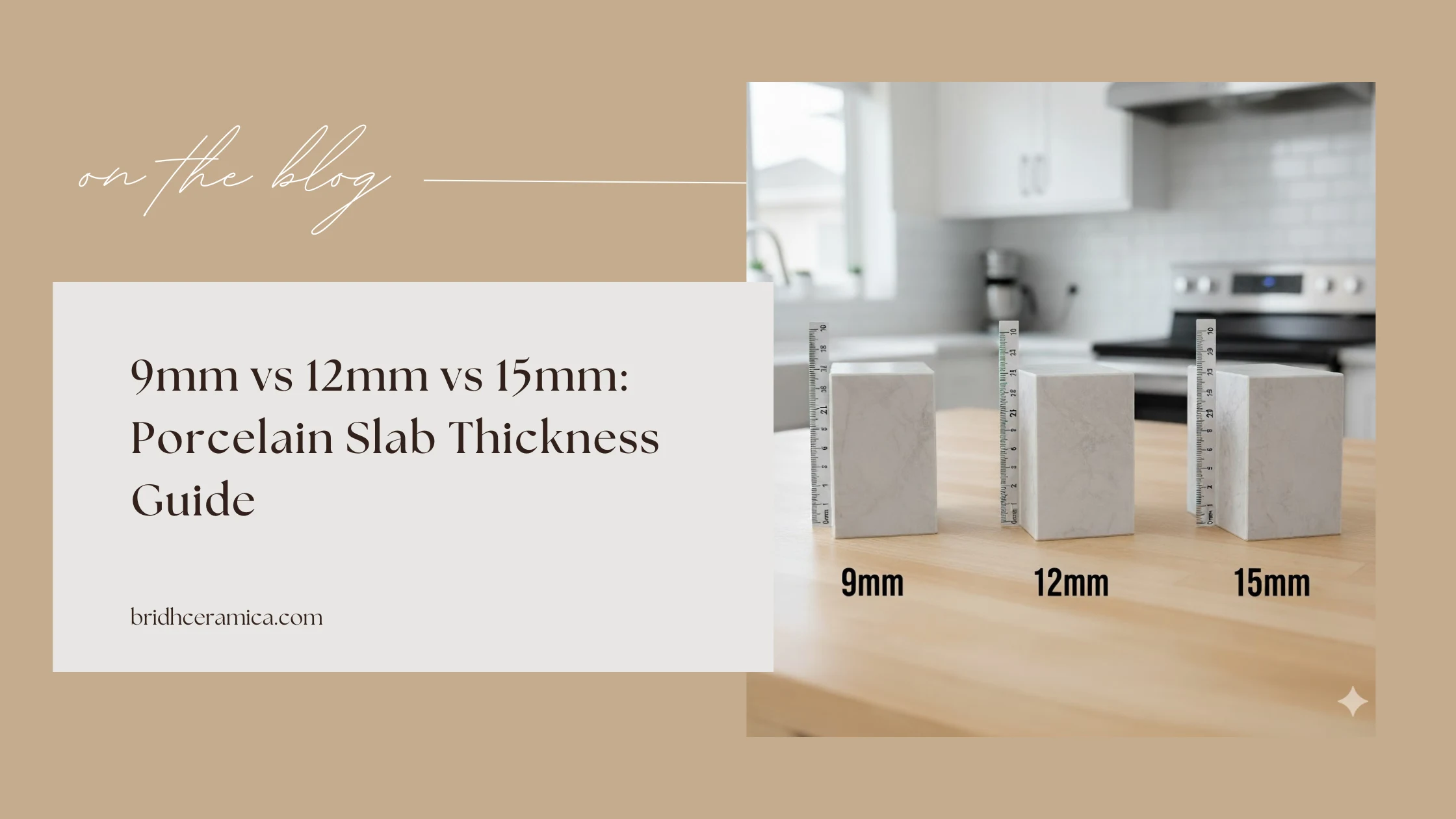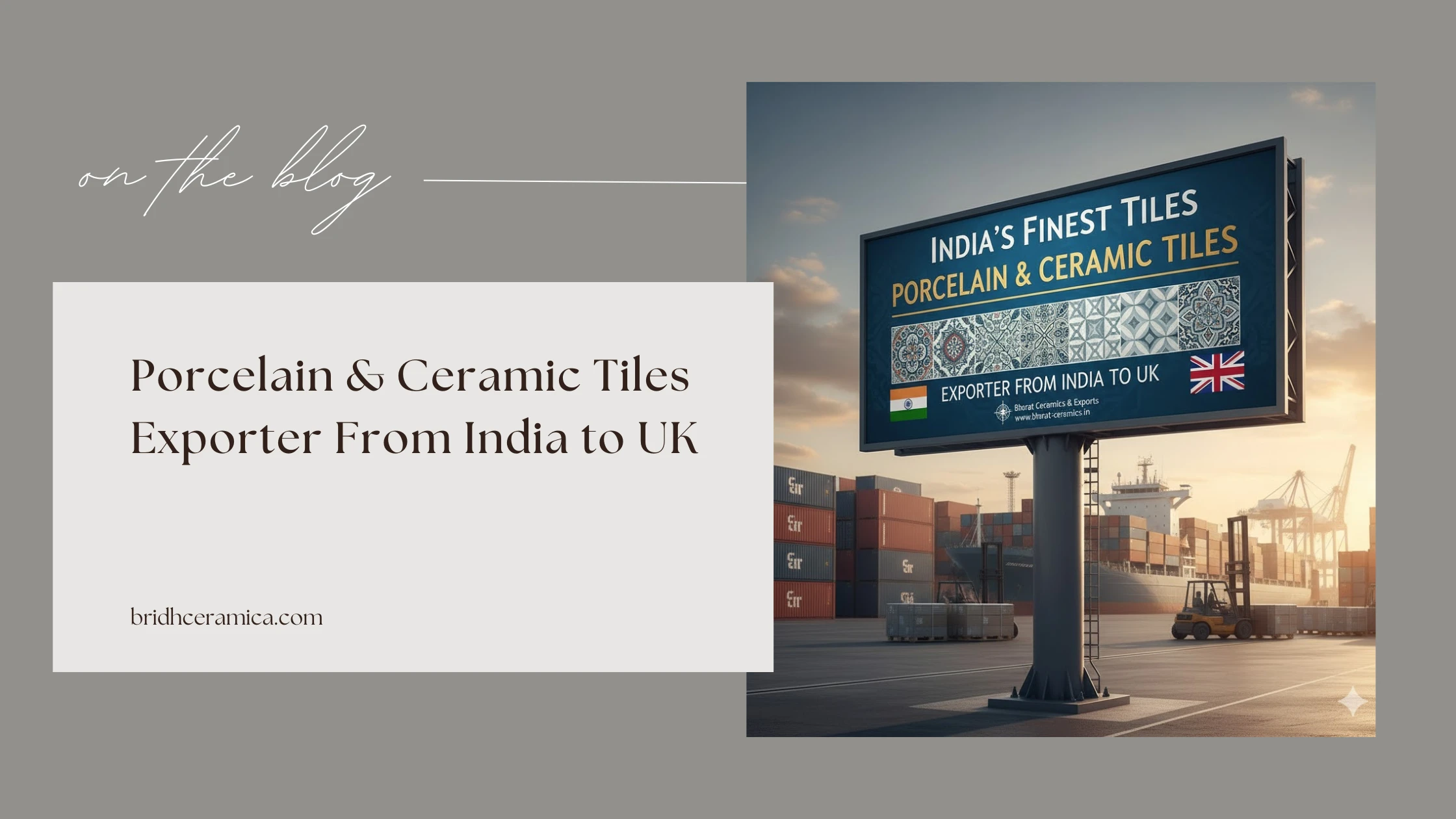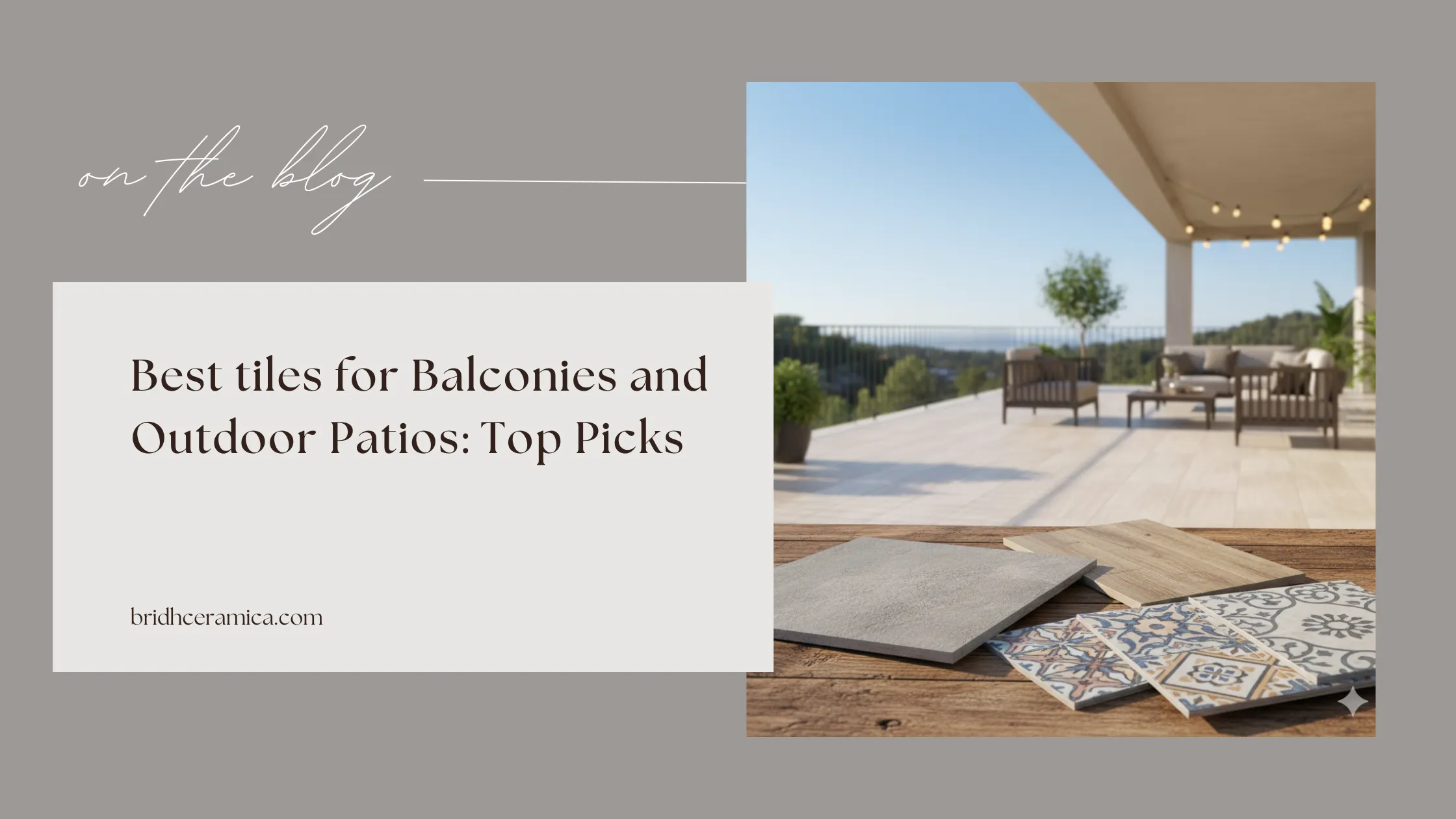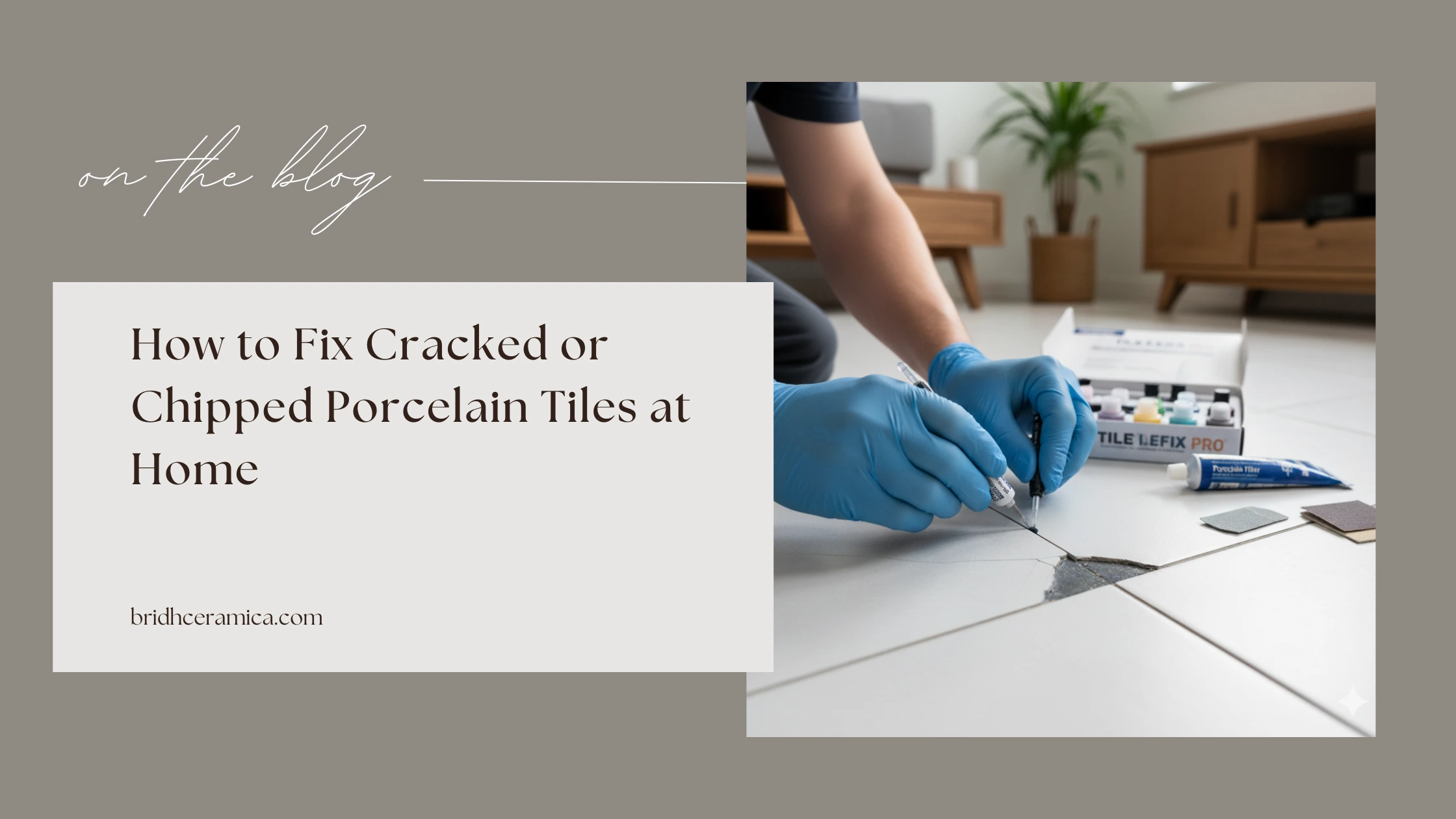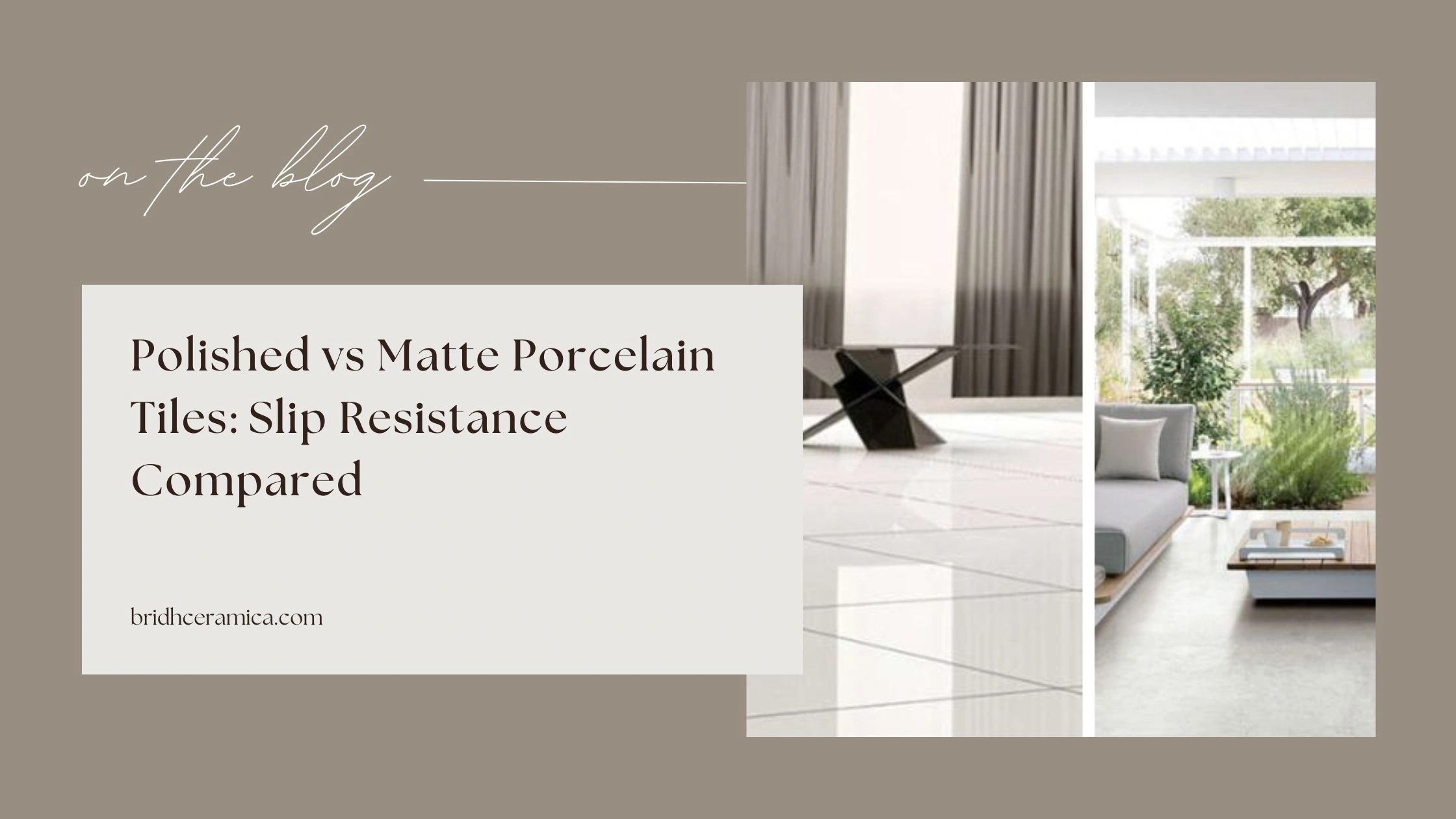Soluble Salt vs Vitrified Tiles: A Complete Buying Guide
Nov 10, 2025Connect With Our Team
Porcelain tiles are traditional favorites in any residential or business interior. These tiles are commonly known to be resistant, adaptable, and attractive with varied and varying finish one of which is the polished porcelain tile and another is the matte porcelain tile. Although the decision may depend on the preferred style, slip resistance is one of the factors that people do not consider when choosing the type of tiles.
Here in the blog, we are going to compare the slip resistance of polished and matte porcelain tiles, the tests like the R rating, P rating, etc., and assist you to choose which one is safer and more practical in your space.
What is Slip Resistance in Tiles?
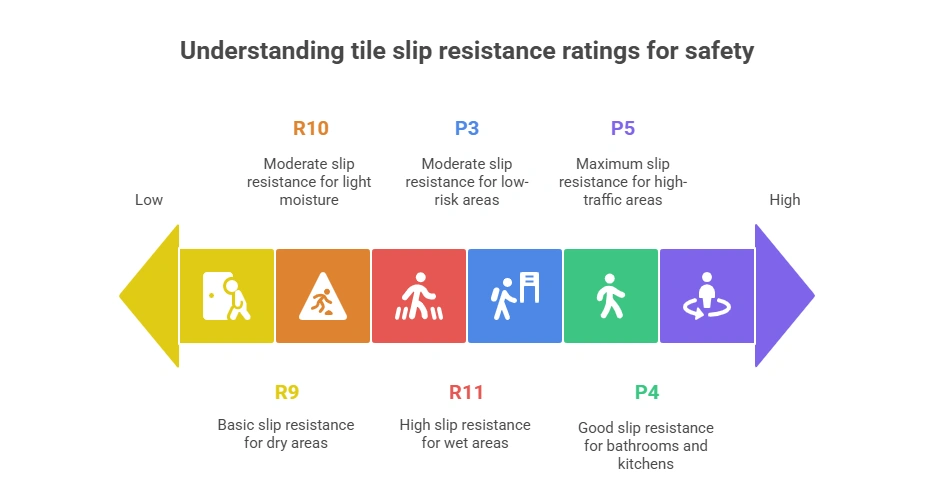
Slip resistance is the characteristic of a tile where the surface of the tile reduces the risk of slipping when a person walks over it. It is particularly necessary in very wet places like the toilet, kitchen, outdoor balconies, and commercial entrances.
The measurement of the floor slip resistance tile is usually accomplished by tests of standardised nature. The two general systems are:
-
R rating: R9, R10, R11 (higher numbers indicate greater slip resistance).
-
P rating: P3, P4, P5 (often used in Australia and New Zealand to classify slip resistance).
These ratings are based on slip resistance testing, in which a tile is tested under wet and dry conditions. Homeowners and designers can make intelligent decisions as to safety and functionality when they know these values.
Slip Resistance Testing Explained
To make informed decisions, it’s important to understand how slip resistance is measured. Here are two commonly used testing methods:
1. The R Rating System
R9 Slip Rating: Basic slip resistance, suitable for dry indoor areas.
R10 Slip Rating: Moderate slip resistance, appropriate for light moisture areas.
R11 Slip Rating: High slip resistance, recommended for wet or outdoor zones.
2. The P Rating System
P3 Slip Rating: Moderate slip resistance, acceptable for low-risk environments.
P4 Slip Rating: Good slip resistance, suitable for bathrooms and kitchens.
P5 Slip Rating: Maximum slip resistance, recommended for outdoor and high-traffic commercial areas.
Both these systems help buyers assess floor slip resistance testing results and choose the right tile for safety and functionality.
How slip resistance is measured (DCOF, R & P ratings)
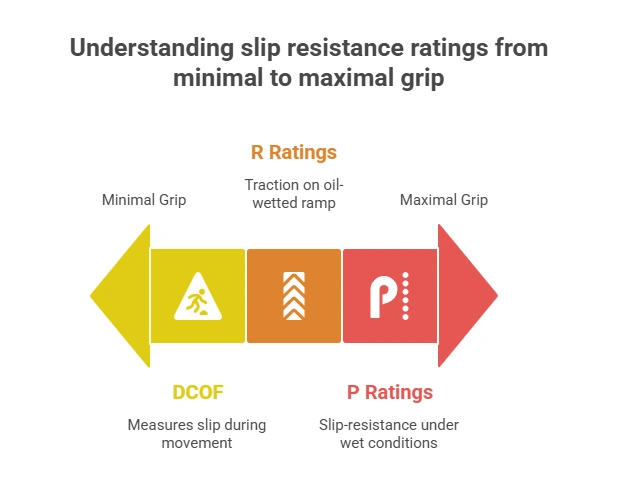
DCOF (ANSI A326.3 / ANSI A137.1)
Dynamic Coefficient of Friction, a laboratory test measuring the amount of slip on a given surface during movement; a controlled machine and a lightly-soapy solution are used to simulate actual conditions. In U.S. practice level interior products where it is likely that walking on wet floors will occur are typically specified at ≥ 0.42 wet DCOF. Notably, one input of the standard stresses DCOF is actual safety which will depend on use, maintenance, contaminants, and design.
R ratings (DIN 51130: R9–R13)
If you see R9, R10, R11, R12, R13, this is the oil-wet ramp test rather commonly used in Europe and referred to internationally. The greater the number, the more traction on an inclined, oil-wetted ramp. The minimum slip resistance is at R9, and the maximum R13, is usually allocated to industrial requirements where the greatest slip resistance is required.
P ratings (AS 4586 wet pendulum: P0–P5)
The methods typically applied in Australia to grade surfaces into P0-P5 classes include the wet pendulum test, whereby P5 represents the most slip-resistant surface under wet conditions. The National Construction Code (NCC) indicates typical minimums in some areas - stair treads are sometimes P3 (dry) and P4 (wet), and depending on the conditions ramps may be P4/R10 (dry) or P5/R12 (wet).
Polished Porcelain Tiles: Features & Slip Resistance
Polished porcelain floor tiles are made with the tile surface being mechanically ground until it develops a mirror-like, glossy appearance. This polish improves the reflection of light and gives them a smooth luxurious appearance that is highly desirable in modern interiors.
Benefits of Polished Porcelain Tiles:
-
Creates a high-end, elegant appearance.
-
Enhances the brightness of spaces due to reflective surfaces.
-
Suitable for walls and low-moisture living areas.
Slip Resistance of Polished Tiles
Polished tiles are usually less slip-resistant due to smooth, shiny surfaces, although they are very beautiful. They may be slippery when in contact with water or other liquids particularly in the bathrooms and the kitchen. The majority of polished tiles rank in the R9 slip rating category that are safe to be used in dry indoor such as residential premises and are not effective in wet conditions.
Optimum Uses: Ideally used in a living room, hotel lobby, bedrooms, as decorative wall cladding and in showrooms where aesthetics are more important than slip resistance.
Matte Porcelain Tiles: Features & Slip Resistance
Instead, the porcelain tiles that are used in textured or non-reflective matte porcelain tile flooring are simply more natural underfoot. This texture difference gives a better hold, thus making matte porcelain tiles safer in certain areas that are -spill prone and have moisture-prone areas.
Benefits of Matte Porcelain Tiles:
-
Offers better traction and floor slip resistance.
-
Provides a soft, natural aesthetic.
-
Less prone to showing watermarks, smudges, and scratches.
Slip Resistance of Matte Tiles
The matte porcelain tiles tend to have a higher slip rating, between R10 to R11 slip rating. They are therefore suitable in bathrooms, kitchens, outside walkways, and around swimming pools where safety is of utmost importance.
Best Uses: Bathrooms, kitchens, balconies, garden settings and commercial areas with high foot traffic.
Polished vs Matte Porcelain Tiles: Slip Resistance Compared
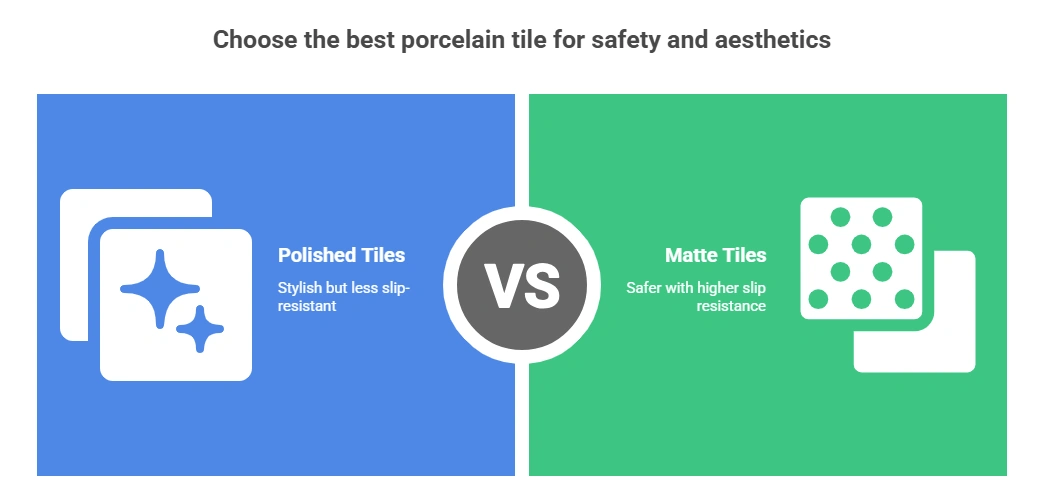
When comparing polished porcelain tiles and matte porcelain tiles, the main difference lies in traction:
-
Polished Tiles: More stylish but less slip-resistant, best for dry, decorative areas.
-
Matte Tiles: Less glossy but far safer due to higher slip resistance ratings, suitable for wet or outdoor environments.
Practical Examples:
-
Bathroom flooring: Matte porcelain tiles with at least an R10 slip rating or P4 slip rating are safer.
-
Commercial lobbies: Polished tiles can be used, but rugs or anti-slip treatments are recommended.
-
Outdoor patios: Matte tiles with R11 slip rating or P5 slip rating are highly recommended.
The choice depends on balancing aesthetics with safety. For families with children or elderly members, matte porcelain tile flooring is often the safer choice.
What is a good slip rating for bathrooms and kitchens?
Bathrooms (domestic): Aim for P4 slip rating on floors likely to be wet; shower floors often benefit from P4 - P5 and smaller formats (more grout = more grip). R10 or R11 are common targets for tiles selected via ramp testing.
Kitchens: For home kitchens, P3 - P4 is typical; commercial kitchens often require higher classifications due to oils/grease—consult your local code/specifier.
Conclusion
When it comes to slip resistance, the difference between polished porcelain tiles and matte porcelain tiles is significant. Polished tiles deliver elegance and shine but are best suited to dry, decorative areas. Matte tiles, with their textured surface and higher ratings, offer safety and practicality in moisture-prone or outdoor spaces.
Before choosing tiles, always check the floor slip resistance testing results and consider the environment where the tiles will be installed. Balancing beauty with safety ensures your flooring is not only stylish but also functional for years to come.
FAQs
1. Are polished porcelain tiles too slippery for flooring?
Polished tiles are not inherently unsafe, but their glossy finish can be slippery when wet. They’re best for walls, bedrooms, or low-moisture areas.
2. Which is safer: matte or polished porcelain tiles?
Matte porcelain tiles are generally safer due to their textured finish, offering higher floor slip resistance.
3. What is a good slip resistance rating for bathroom tiles?
For bathrooms, a minimum of R10 slip rating or P4 slip rating is recommended for reliable traction.
4. How can I improve slip resistance on polished floor tiles?
Options include using anti-slip coatings, placing rugs or mats in wet areas, and choosing smaller polished tiles with more grout lines for added grip.
Whatsapp Chatx
Hi! Click one of our representatives below to chat on WhatsApp or send us email to dhaval@bridhceramica.com

|
************** +91 97023 82809 |
 TILES VIEW
TILES VIEW
